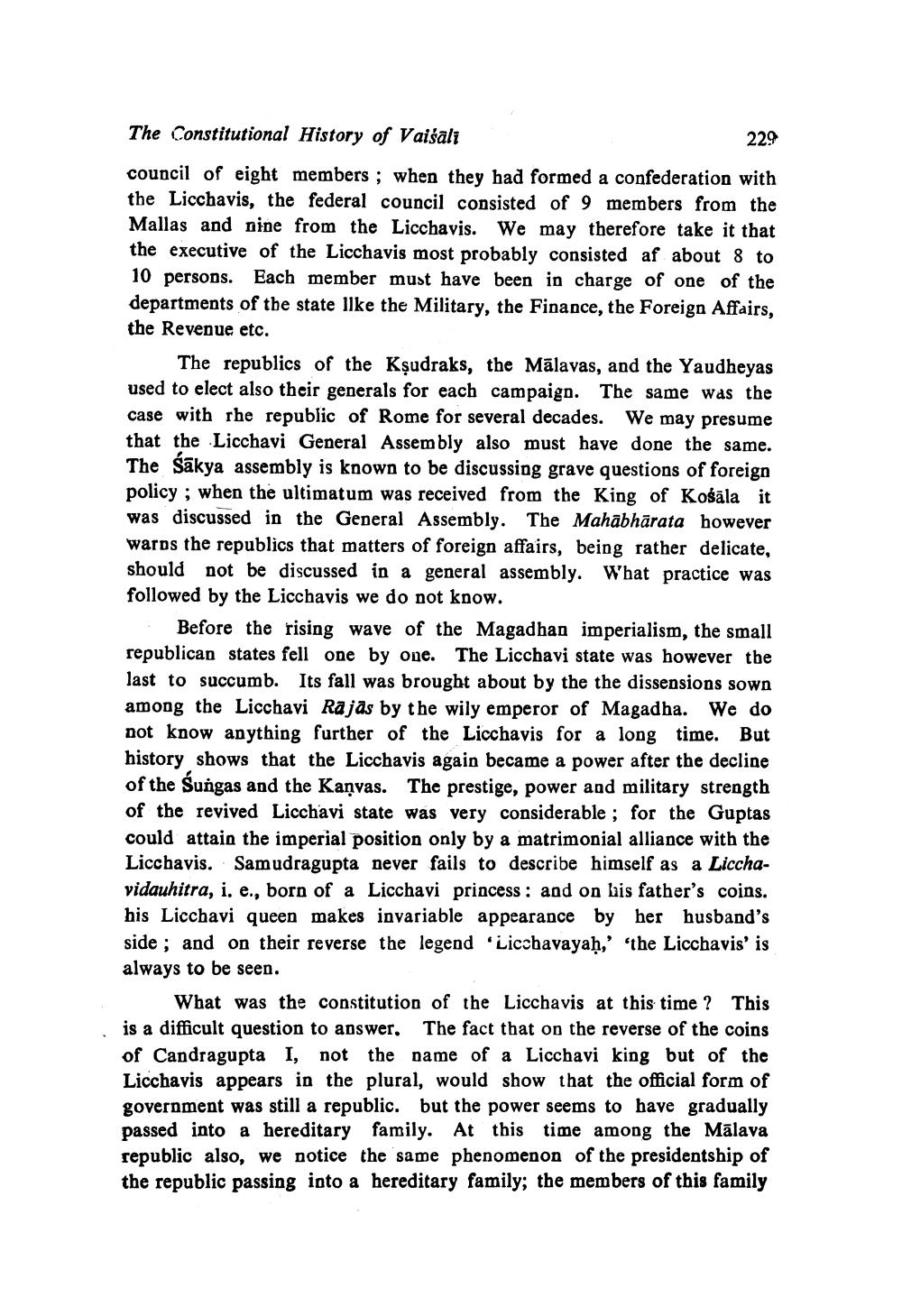________________ The Constitutional History of Vaisali 229 council of eight members; when they had formed a confederation with the Licchavis, the federal council consisted of 9 members from the Mallas and nine from the Licchavis. We may therefore take it that the executive of the Licchavis most probably consisted af about 8 to 10 persons. Each member must have been in charge of one of the departments of the state Ilke the Military, the Finance, the Foreign Affairs, the Revenue etc. The republics of the Ksudraks, the Malavas, and the Yaudheyas used to elect also their generals for each campaign. The same was the case with rhe republic of Rome for several decades. We may presume that the Licchavi General Assembly also must have done the same. The Sakya assembly is known to be discussing grave questions of foreign policy ; when the ultimatum was received from the King of Kosala it was discussed in the General Assembly. The Mahabharata however wards the republics that matters of foreign affairs, being rather delicate, should not be discussed in a general assembly. What practice was followed by the Licchavis we do not know. Before the rising wave of the Magadhan imperialism, the small republican states fell one by one. The Licchavi state was however the last to succumb. Its fall was brought about by the the dissensions sown among the Licchavi Rajas by the wily emperor of Magadha. We do not know anything further of the Licchavis for a long time. But history shows that the Licchavis again became a power after the decline of the Sungas and the Kanvas. The prestige, power and military strength of the revived Licchavi state was very considerable ; for the Guptas could attain the imperial position only by a matrimonial alliance with the Licchavis. Samudragupta never fails to describe himself as a Licchavidauhitra, i, e., born of a Licchavi princess : and on his father's coins. his Licchavi queen makes invariable appearance by her husband's side ; and on their reverse the legend 'Licchavayah,' 'the Licchavis' is always to be seen. What was the constitution of the Licchavis at this time? This is a difficult question to answer. The fact that on the reverse of the coins of Candragupta I, not the name of a Licchavi king but of the Licchavis appears in the plural, would show that the official form of government was still a republic. but the power seems to have gradually passed into a hereditary family. At this time among the Malava republic also, we notice the same phenomenon of the presidentship of the republic passing into a hereditary family; the members of this family




